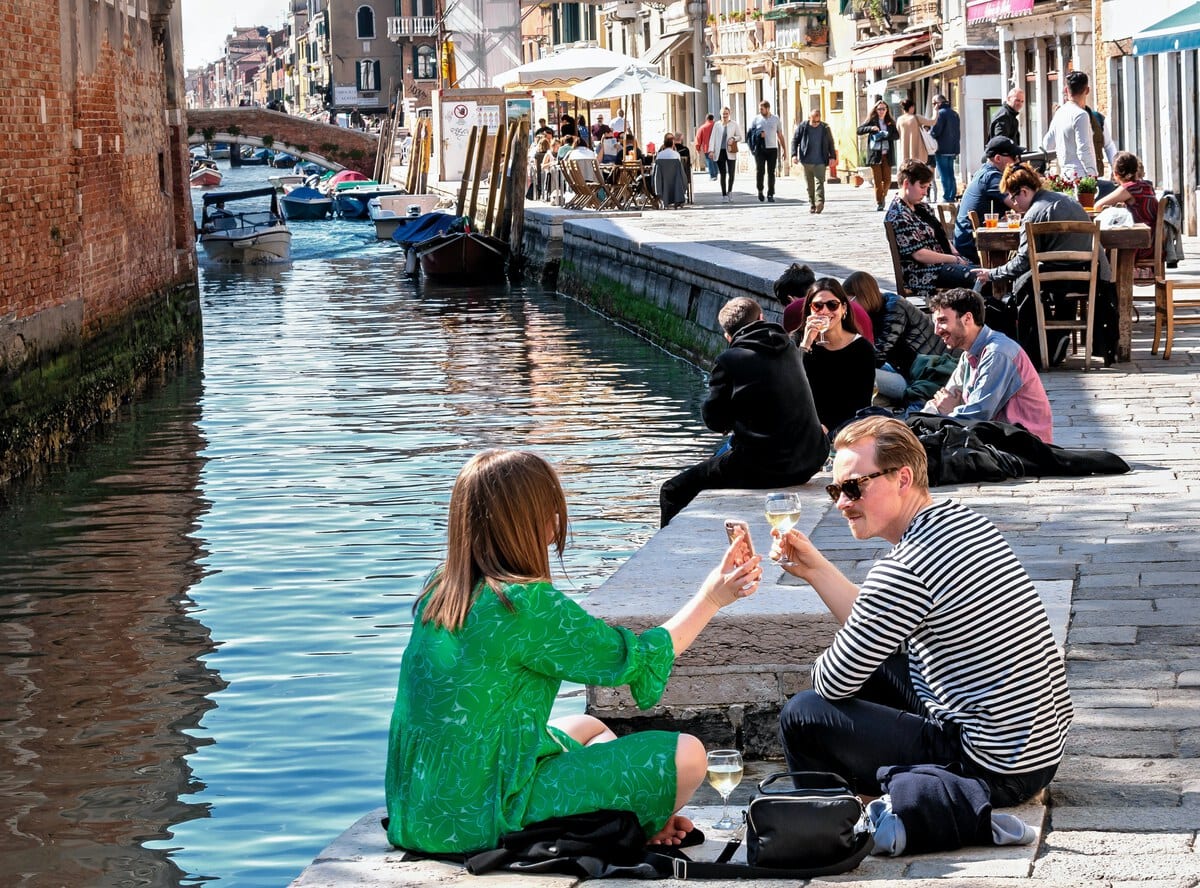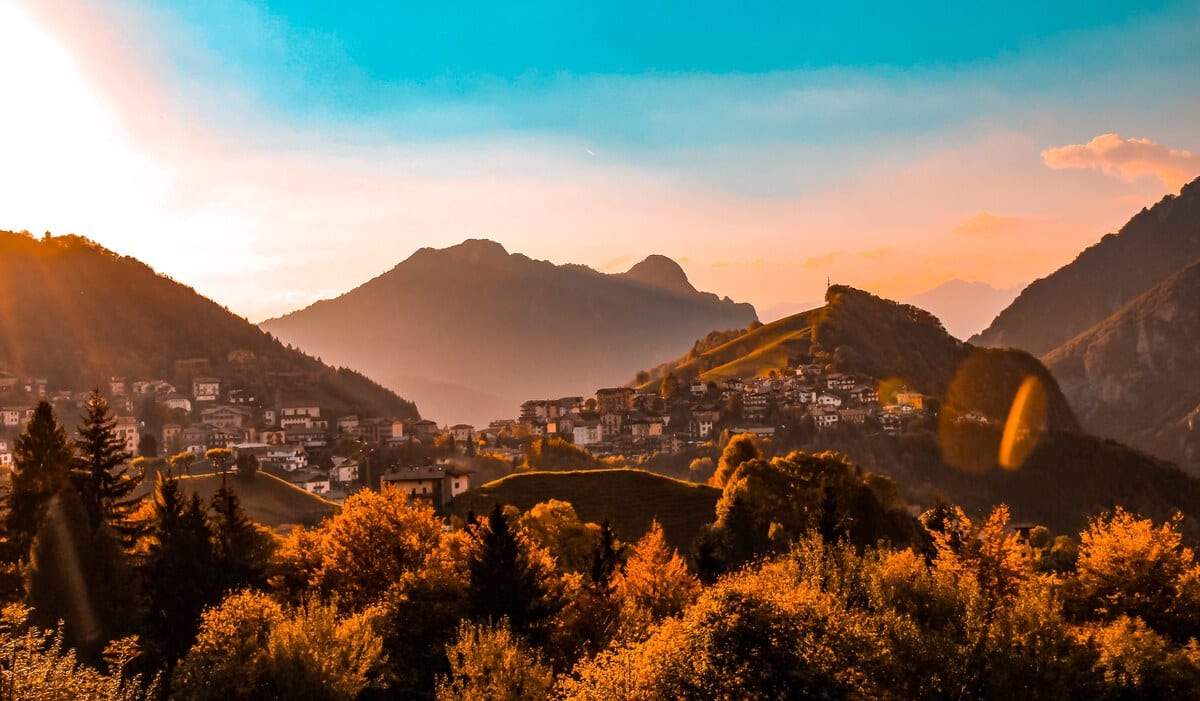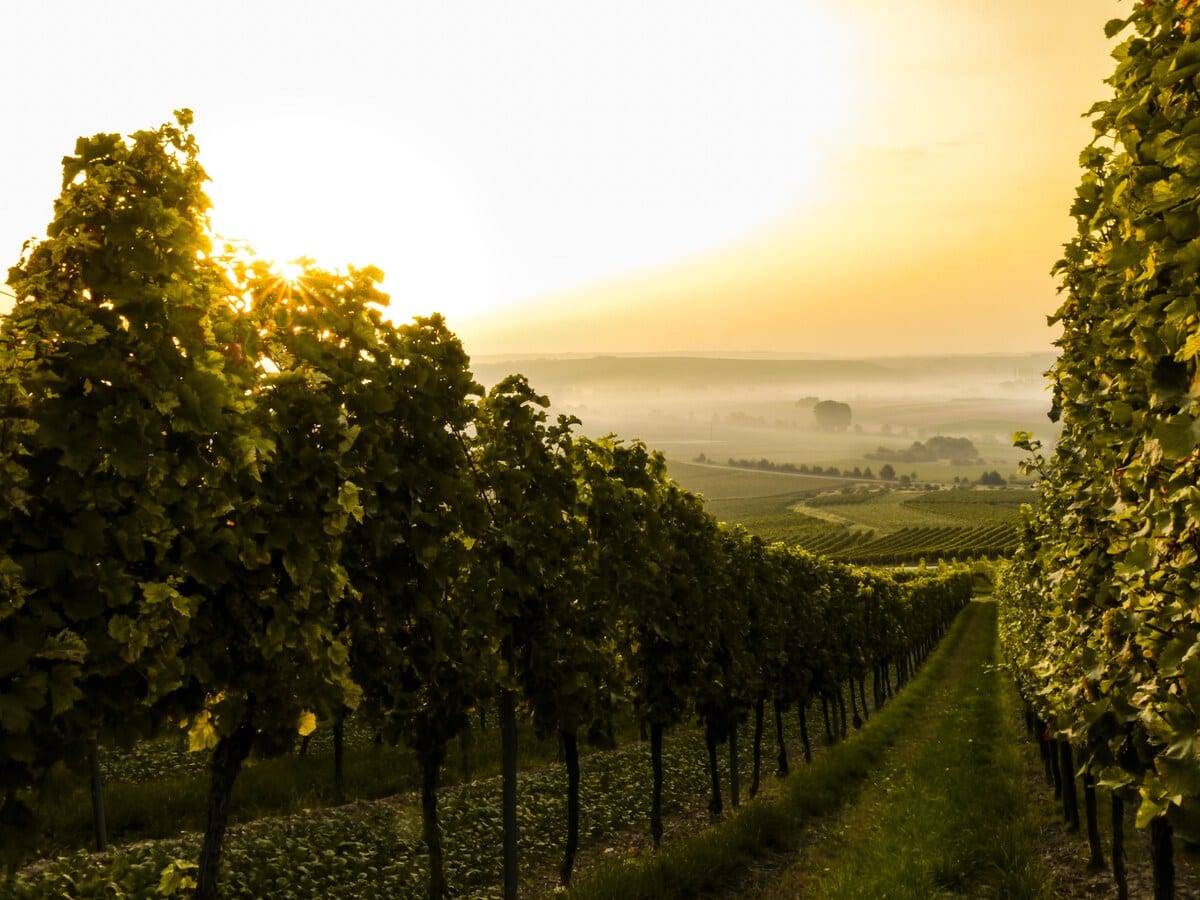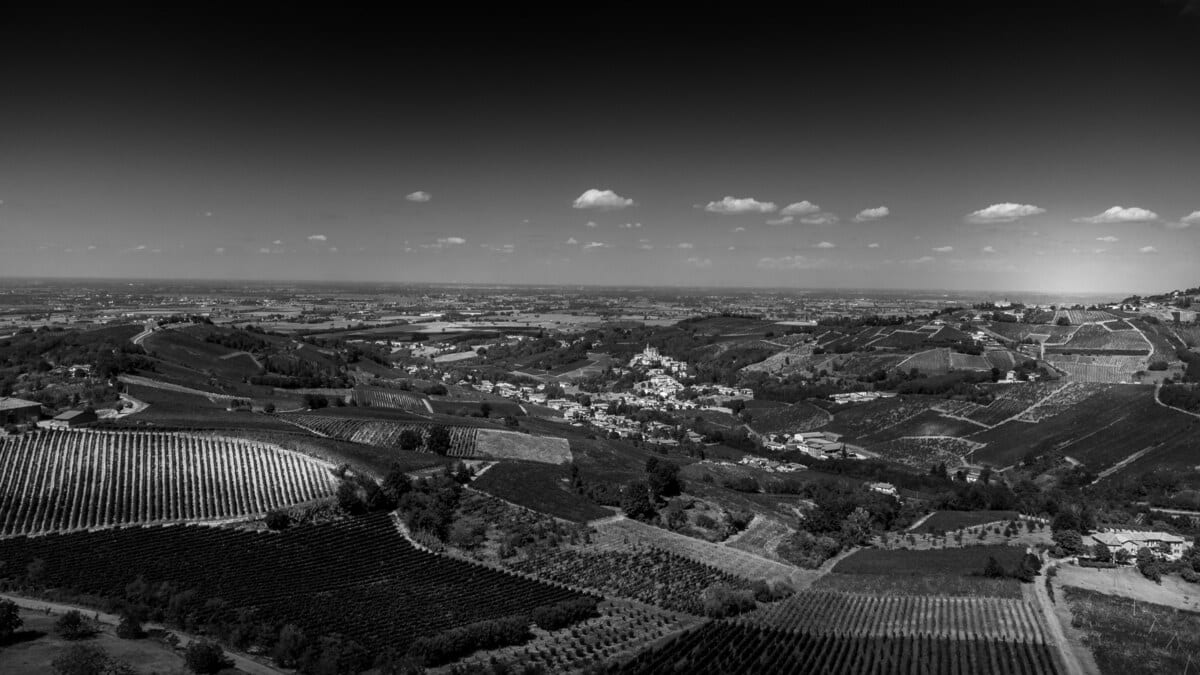Italian sparkling wines. Know them, love them!
An almost-complete guide to Italian sparkling wine
Photo by Mel Maldonado-Turner
I recently wrote about sparkling wine.
While at it, I realised how wide of a subject bubbly really is.
And being in Italy, I seriously need to dive in the Italian sparkling wine scene. It’s rather unknown outside the country but it’s lush, diversified and, well, tasty!
So in this artile I will look at:
- some of the many sparkling wines made in Italy;
- the region they are produced & why that is interesting;
- how they taste like;
- how to pair them with food.
I will dive in some of the usual suspects and some more unknown bubbly:
- Prosecco;
- Franciacorta DOCG;
- Trento DOC;
- Oltrepò Pavese Metodo Classico DOCG;
- Lambrusco sparkling wine.
Let’s get on with it!
Prosecco
The world renowned sparkling wine of Italy is Prosecco.
Where is Prosecco from?
Prosecco comes from in the North-East of Italy, in Veneto and Friuli regions.
Within this wider area there are two sub regions that are further protected by the DOCG denomination. These are the Conegliano Valdobbiadene Prosecco and the Asolo Prosecco.
Finally, the very best Prosecco is considered to be the Cartizze Prosecco. Cartizze is a tiny vineyard area of barely 300 square meters of steep slopes considered the Grand Cru of Prosecco.

Photo by sterlinglanier Lanier
How is Prosecco made?
Prosecco is made with a specific grape, called Glera that must represent at least 85% of the final wine blend. The remaining 15% come from a handful of other permitted grapes.
Another peculiarity of Prosecco wine is that its bubbles are obtained with the Charmat vinification method. Here, the second fermentation responsible for the CO2 formation happens in big stainless steel tanks. So, the wine bottled is already fizzy.
Finally, Prosecco can be a blend of grapes from different years or from the same year, aka Millesimato. A blend enhances the consistency of the wine throughout different years. It also helps hiding some of the defects or unbalances that grapes from a single harvest could lead to.
Millesimato wine on the other hand is made in years when the grapes are of exceptional quality.
How is Prosecco and how to pair it?
Prosecco owes his international success to its high drinkability and relative low cost.
Thanks to the Charmat method, Prosecco production costs can be kept down. Having the second fermentation in big tanks, filtering and fining in big batches and bottling in the final phase it’s very cost effective!
Prosecco may be cheaper than Champagne, but people end up drinking way more of it. Even in bad years, the volume of Prosecco bottles sold worldwide is more than double the volume of Champagne bottles. People’s love for this wine style may be linked to Prosecco easy-going style; rather delicate, fresh and fruity. Prosecco is perfect as an aperitif. Yet, it can also be paired with many food dishes, from pasta and risottos to cheeses, salads and cured meats.
Curiosities about Prosecco
- Prosecco can also be made as a still wine!
- Prosecco rosé (sparkling in this case) can be made only using Glera grapes blended with up to 15% Pinot Noir!
Not only Prosecco
Internationally, Prosecco may be the most famous Italian sparkling wine but Italy produces many more types of bubbly!
The choice is wide. It includes white and red wines, sweet and dry styles. And the producing regions span from the North to the South of the country.
Franciacorta
Rather famous within Italy is Franciacorta, formally known as Franciacorta DOCG.
This sparkling wine is one of the finest choices in terms of Italian sparkling wines.
Where is Franciacorta from?
Franciacorta wine is made in Northern Italy, in the Brescia province, east of Milan. 10,000 years ago the area was covered in glaciers. Having those now retreated they left behind a mineral-rich soil, super appreciated as sparkling wine terroir!

Photo by Sergio Rota
How is Franciacorta made?
Franciacorta can be made with Chardonnay, Pinot Noir, Pinot Blanc and Erbamat1
Franciacorta, like Champagne, is produced with the Traditional Method. This means that the wine is bottled still and the second fermentation, thus the development of the wine bubbles, happens in the bottle.
You can read more about the laborious traditional method in this article.
Depending on the blend of grapes used in making the wine, Franciacorta can be Blanc de Blanc or Blanc de Noir. In the first case only white grapes are used, so it must be made with Chardonnay and/or Pinot Blanc. In the second case the must comes from red-berried grapes only, so Pinot Noir.
Finally, some Franciacortas are Satèn (French for “silk”). These wines are Blanc de blancs where the bottle pressure is kept lower than 5 bars (when usually it sits around 6 bars). This practically means finer bubbles and a more elegant and “creamier” profile, or “silky”, I should say!
Franciacorta can be Millesimato or not depending on the grapes used, if they come from different vintages or a single vintage.
How does Franciacorta taste like and how to pair it?
This Italian sparkling wine has an elegant and fragrant profile. Typical notes include bread crust and toasted nuts but also citrus fruits, white flowers and more plum, stone fruits.
Thanks to its freshness, finesse and complexity it pairs well with a range of rather “difficult” foods. Canapés and fried finger food, savoury cheese and smoked or preserved fish. Having said that, it’s great on its own. Rarely did I find difficult to finish a glass of Franciacorta, even when short of nibbles!
Trento DOC
Where is Trento DOC made?
Trento DOC is another excellent Italian sparkling wine. It’s produced in the area around the town of Trento, in Northern-East Italy. The vineyards grow at a moderate altitude, up to 900 meters above sea level.

Photo by Sven Wilhelm
How is Trento DOC made?
Trento DOC blend includes Chardonnay, Pinot Meunier, Pinot Noir and/or Pinot Blanc. Just like Franciacorta, Trento DOC is made with the Traditional Method. And just like Franciacorta and other sparkling wines it can be a Blanc de Blanc2 or a Blanc de Noir3.
How does Trento DOC taste like and how to pair it?
Trento DOC is rich and toasty with a mineral touch due to its rocky terroir, and floral, elegant notes.
Cheese, cured meat and poultry are all traditional and great pairings for this sparkling. Having said that Trento DOC will surprise you with fried chicken or fish!
Oltrepò Pavese Metodo Classico DOCG
Where is Oltrepò Pavese Metodo Classico DOCG made?
And another great sparkling wine made in the North of Italy is Oltrepò Pavese Metodo Classico DOCG. The production region lays South- West of Milan, around the lovely town of Pavia.
How is Oltrepò Pavese Metodo Classico DOCG made?
As the name suggests, Oltrepò Pavese too is made with the Traditional Method (Metodo Classico 🤓). What differentiates this Italian sparkling wine from other local “competitors” is its blend.
It is a high percentage of Pinot Noir. A regular bottle of Oltrepò Pavese Metodo Classico DOCG must contain at least 70% of Pinot Noir. The rest of the blend can be made of the usual suspects: Chardonnay, Pinot Blanc and Pinot Gris. If the label also reads Pinot Nero or Pinot Nero rosé, then the percentage of the main grape can’t be lower than 85%, almost a Blanc de Noir2!

Photo by Claudio Cesaro
How does Oltrepò Pavese Metodo Classico DOC taste like and how to pair it?
These wines are mainly made with Pinot noir which makes their profile fragrant, savoury and fruity with notes of pastry and red berries.
With it’s complex profile and its fruity notes, Oltrepò Pavese sparkling wine goes very well with rich pasta dishes and risottos. And it pairs very nicely with baked fish and poultry. Personally, was I going to pop open a bottle of Oltrepò Pavese I would sip it with toasted bread and baccalà mantecatto 😉!
Lambrusco sparkling wine
Becoming more and more popular in recent years is Lambrusco. Formally, Lambrusco sparkling wine is called Reggiano DOC Lambrusco spumante in Italy.
Where is Lambrusco sparkling wine made?
Lambrusco sparkling wine is produced in Emilia Romagna region, which is sandwiched South of Milan and North of Tuscany.
How is Lambrusco sparkling wine made?
Lambrusco sparkling wine is made with Lambrusco grapes (at least 85%) which is an umbrella term to include six sub-varieties4. It’s a red sparkling wine, aromatic and fruity!
Lambrusco sparkling wine is often made sweet, by adding grape must to the base, dry wine. However, there are also examples of Lambrusco vinified as a sparkling dry wine.
How does Lambrusco sparkling wine taste like and how to pair it?
Lambrusco sparkling wine can be sweet or dry. In both cases it has a fruity and floral profile with notes of red berries and rose petals. As a dry wine its a spectacular pair for pizza. The sweet version is great sipped with berry tarts and berry based desserts!

Photo by Natalia Y
Other sparkling wines of Italy
The list of sparkling wines from Italy is could go on and on. The landscape is rich and various, it includes, among others:
- Asti Spumante; sweet and comforting,
- Alta Langa DOCG; marrying Pinot Noir and Chardonnay once again,
- Lessini Duello; the least famous sibling of Prosecco….
Every region produces some excellent local bubbly with the indigenous grapes growing in the area. The best approach really, is to get curious and start tasting away.
Champagne isn’t the only sparkling wine out there just like Prosecco isn’t the only bubbly of Italy.
There is a lot to try, so roll up your sleeps and get tasting!
Italian Sparkling wines you must try!
Before you go, check out this list of Italian sparkling wines you must try…
